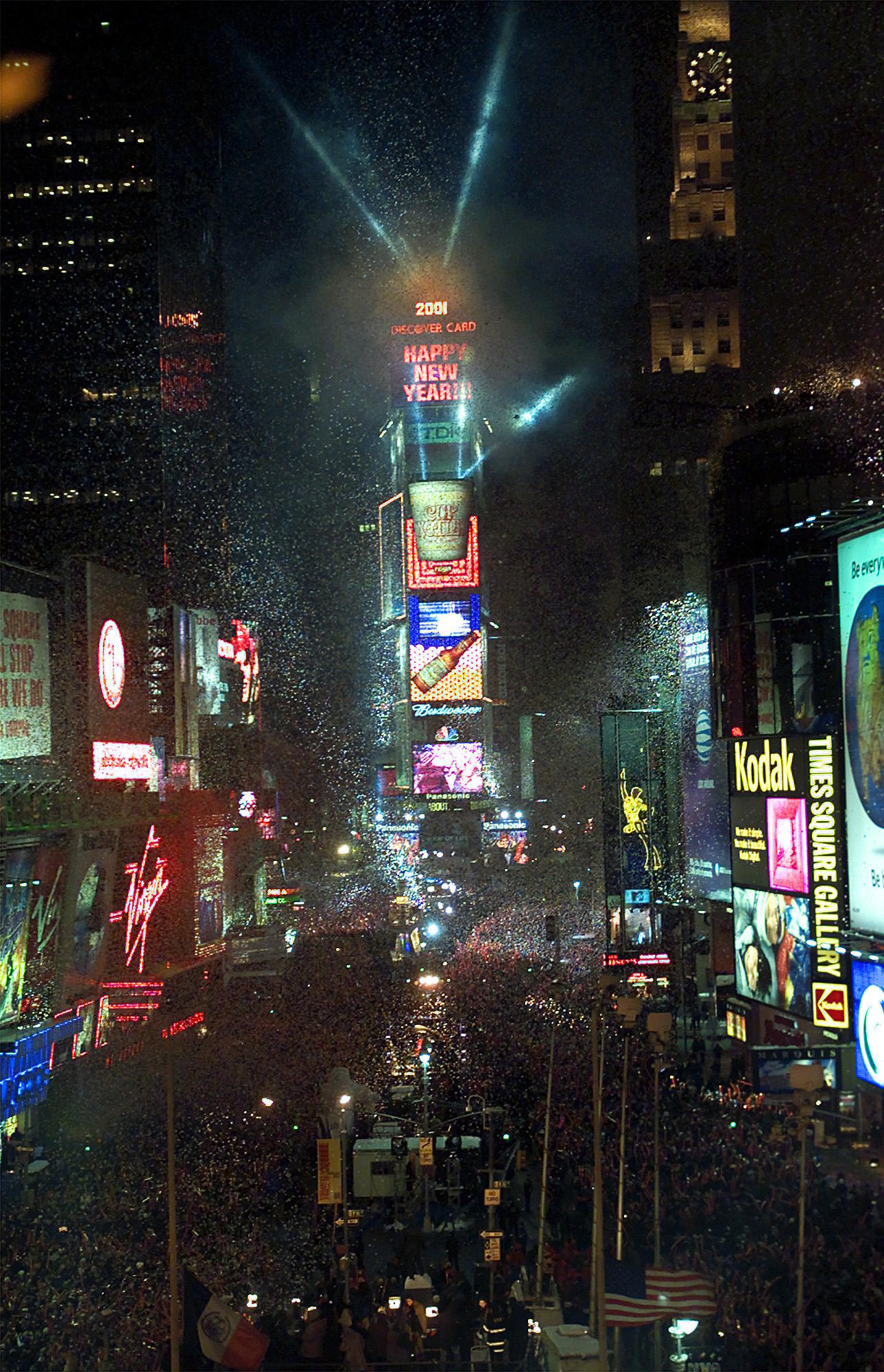There was once a hotel there called Heritage, later renamed National, which was actually half hotel and half residence for long-term tenants on a tight budget. Its 13-story facade was a 1909 pastiche: the lower floors were made of stone and imitated the language of fairy tale castles. Then, the building transitioned to brickwork and higher up, it became a gallery of glass and metal arches. There was a bar downstairs called The Golden Dollar (there are photos of a yellow storefront that read "Topless bar & lounge. Exotic girls") and a bookstore. The building occupied an L-shaped plot. The north side faced 42nd Street and measured 60 meters. The south side faced 41st Street and measured 38 meters. The west side faced Seventh Avenue and measured 46 meters... And any tourist who has spent a few days in Manhattan will recognize those streets: 41, 42, Seventh. The hotel had a dazzling address: Times Square number 5. It seems like a lot of address for a hotel like that, but Times Square, the heart of New York City, was a seedy place until not so long ago.
At least, the Hotel National lasted nine decades, from 1909 to 1999, much longer than its successor, the so-called Tower 5 Times Square that took its place and which last week, half-empty and obsolete, received a new purpose. The building, completed in 2002, with 38 floors, 175 meters in height, and 102,193 square meters of leasable space, will undergo a profound transformation. It will no longer house offices, a business for which demand has plummeted in the last five years, even in Manhattan, and will be converted into small residential units.
A large number of small residential units. 1,050 units will be studio apartments and another 200 will be one-bedroom apartments. Additionally, a quarter of the units will have affordable housing status, a somewhat toned-down version of our public housing in the US. They will have reduced prices and will be reserved for registered New Yorkers whose incomes represent less than 80% of the city's median income. In exchange, the reform developers will receive tax incentives and administrative facilitations.
The building's renovation is symbolic in many ways. It speaks, to begin with, of changes in the world of work. The construction of the 5 Times Square tower began before the Twin Towers attacks but finished afterward. The tragedy meant that the building was born into an unfavorable landscape. Its developer, Boston Properties, had a main tenant for the building, the consulting firm Ernst & Young, before starting construction, but never managed to occupy the entire rental space. Then came the 2008 crisis, followed by the pandemic, the rise of remote work, and the contraction of the office market. In 2024, when the current owners of Times Square 5 (a complex consortium of public and private companies) proposed converting the offices into apartments, its occupancy rate was 20%.
The renovation also marks a turning point in the history of New York City planning. In 1999, when the Kohn Pedersen Fox studio began construction of the skyscraper on the former site of the Hotel National, the New York City Council was promoting a transformation of Midtown, the Manhattan neighborhood where Times Square is located. The intersection of Broadway and Seventh Avenue was to cease being a red-light district full of theaters, dark bars, and suspicious jewelry stores, to become a major economic hub. It was to be a business district during the day and a tourist attraction illuminated at night. Two years after completing 5 Times Square, its developers unveiled the neighboring Times Square Tower, also intended for offices.
This is the Times Square we have known in the 21st century and one that may soon come to an end. Manhattan faces a chronic housing shortage estimated by local authorities at 100,000 units. At the same time, office towers have become partially vacant. The solution to these two problems seems obviously interconnected, and that is why the City Council has announced that it will waive many urban planning regulations that could hinder the transformation. What will be the impact of filling a space like Times Square, tainted by tourism, with residents? This will be seen in 2027, when the first phase of the renovation is completed. One more thing to mention: 10 subway lines stop beneath the tower. There will be no other apartments like these in the world.
